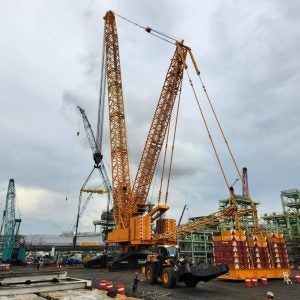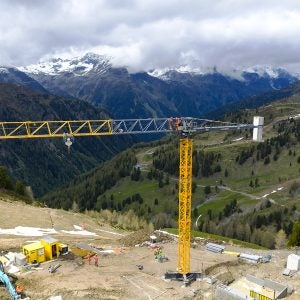Commercially available from July this year, the 21 LC 660 will be sold as four different versions — in the 18t, 24t, 36t and 48t capacity classes — with maximum lifting capacities of between 5.2t and 6.6t at the end of its 80m jib.
Aimed at public works and infrastructure projects as well as the general construction and mining industries, the 21 LC660 features some of the 21 LC 750’s most popular features, such as the slewing part design.
Like the 21 LC 750 it also lacks an apex element, thanks to the ability to quickly set up the first jib and counter jib sections directly over the slewing platform.
However the 21 LC 660 distinguishes itself from its bigger brother by having a counter jib 3m shorter than the 21 LC 750 despite the similar capacity capabilities.
To make maintenance on the crane’s electrics easier, all electrical components and converters have been placed in one cabinet on the cabin platform. In addition, the crane also has an expanded transit zone at the slewing part.
Several configurations of the crane are possible thanks to its ability to be constructed using the D36 mast sections of the 21 LC 750 or the new D35 mast section developed specifically for this crane.
Supplied as four separate panels that can be easily assembled into a mast section using pins, D35 mast sections are easier to transport despite the assembled mast sections being the same dimensions as the D36 mast sections (5.5m tall and 2.5m wide).
Using a D35 tower sections, a freestanding height of 73.3m can be achieved by the 21 LC 660 on fixing angles, compared to 69.9m on a stationary or travelling base. With a mixture of D35 and D36 sections, the freestanding height can reach 78.8m on fixing angles or 80.9m as a base version. The maximum freestanding height in any configuration is 124.8m.






